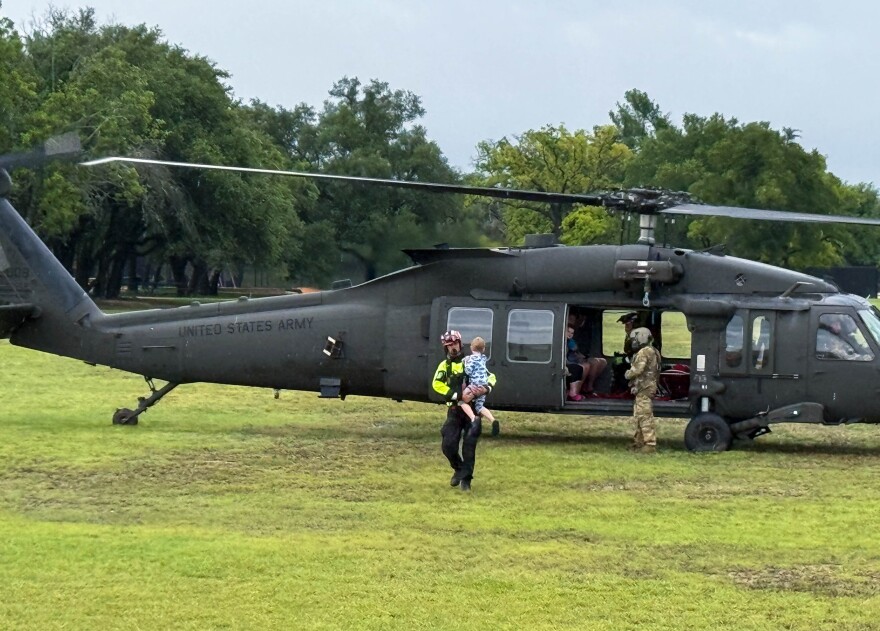David Gould got a phone call around 3:30 a.m. Saturday, alerting him to flooding at Hope House, a long-term residential home for children and adults with severe disabilities just outside Liberty Hill.
"It was Sherry [Richardson]," Gould said, referring to the office manager and human resources director who lived in a cabin on the property. "She said, 'Dave, there's water coming into the cabin.'"

Gould, Hope House's executive director, said Richardson then hung up to speak with emergency dispatchers on the other line.
"I called her back 15 minutes later, and I couldn't get a response," he said.
Richardson, 64, was one of three people confirmed to have died in the flash flooding over the weekend in Williamson County. Gould said she “was the glue that kind of held everybody together" and described her as the “office mom.”
The cabin Richardson was staying in backed up to a stream called Little Creek. Gould, who once lived there, said it looked like a tornado had swept through the area.
"The cabin is completely gone," he said. "The story of her life is spread out along the tree lines and down the river, and we just keep finding little bits."
Displaced
An Army helicopter from Fort Hood was called in to help evacuate 13 children and three staffers from the main campus, Gould said.
He praised the actions of first responders, but said the evacuation process was "terrifying." Many of the children are nonverbal.
"Our kids, who already don't have good communication, have now gone through trauma," he said. "We can't communicate with them [about] what they're going through, or [tell them] it will get better."

Right now, the children are staying in homes with Hope House's adult residents in downtown Liberty Hill. The homes are supposed to house only four people, he said, but each now houses six to seven.
"That needs to come to an end relatively soon — to get them back to their own home, on their own schedule, in their own environment," he said. "In order to make that happen, we are frantically working to get the main campus set back up and safe and comfortable to live in."
Gould said all of the main campus' bedrooms, day areas, kitchen and offices were inundated with floodwaters from Little Creek.
"I was really numb," he said, recalling how he felt when he first saw the extent of the damage. "[The] buildings are really a tool for taking care of children. And we lost our tool. We lost the thing that makes it possible for us to take care of this very special population."
Tara Reyes, a cook at Hope House, said she was heartbroken when she returned to the property Sunday.
"It's hard to come here," she said. "It's so empty."

How to help
Gould estimated more than 300 volunteers have come out to help clean up the property over the past few days.
"They cleared our torn-down fence. They got rid of trash and debris," he said. "They started cleaning our entire place, top to bottom."
Tom Beesley, an engineer at Samsung, took off work Tuesday to join the clean-up efforts.
"I was the first with a chainsaw, and I was like — I'm not gonna be able to do much," he said. "And then people just kept filing in."
Beesley said volunteers cleared most of the property of brush and debris by Tuesday afternoon.
"It's a good cause," he said.
Gould said he and other leaders of the organization need to take some time to regroup. Hope House no longer needs volunteers, but it is accepting donations on its website.
Gould said he's confident Hope House will be able to make a full recovery with the community's help.
"Is there a chance that this exact thing happens again? Yes," he said. "[But] I feel secure in our disaster plans and in our team and in our community. ... We are, after all, in a Hope House."






